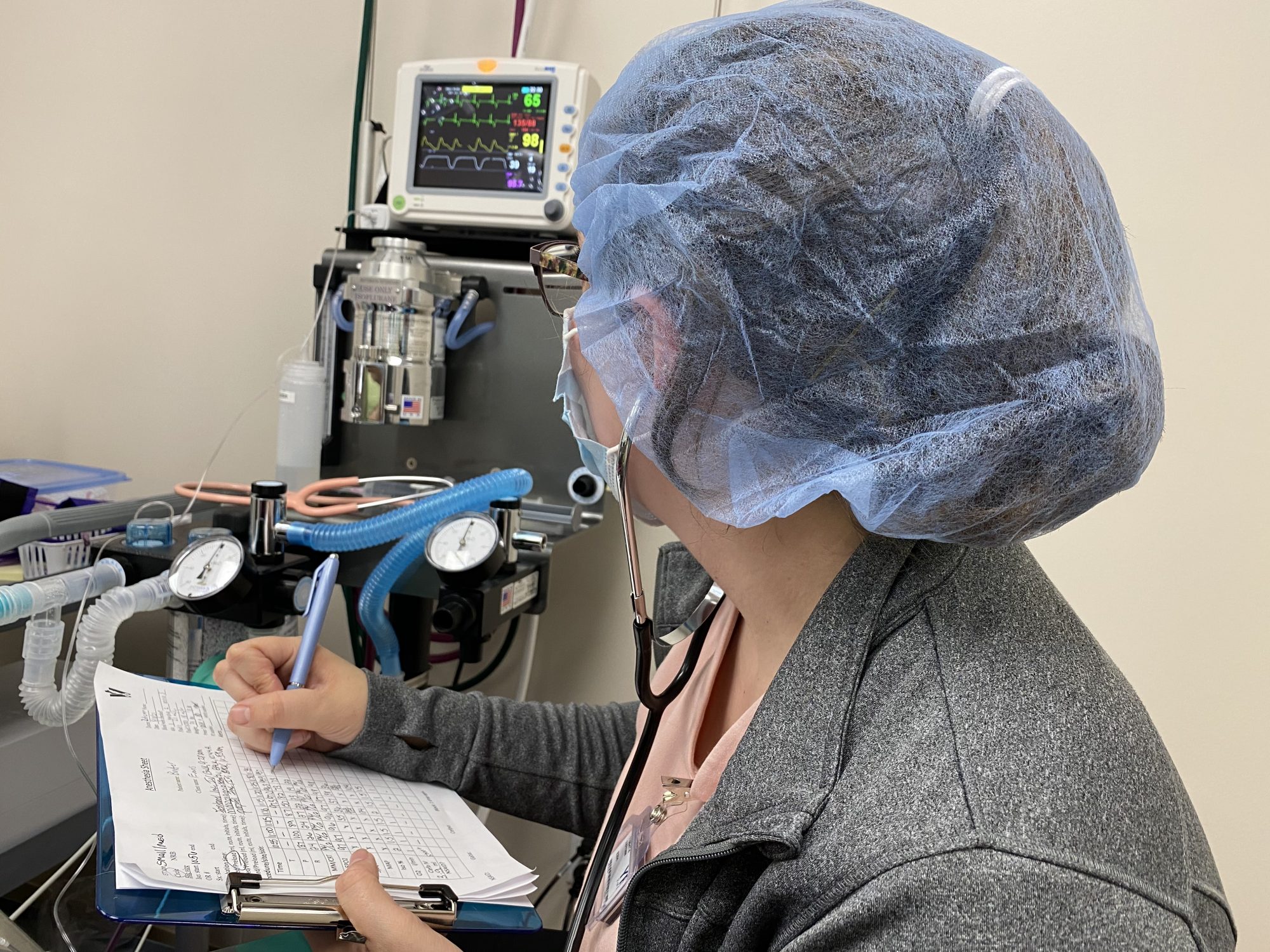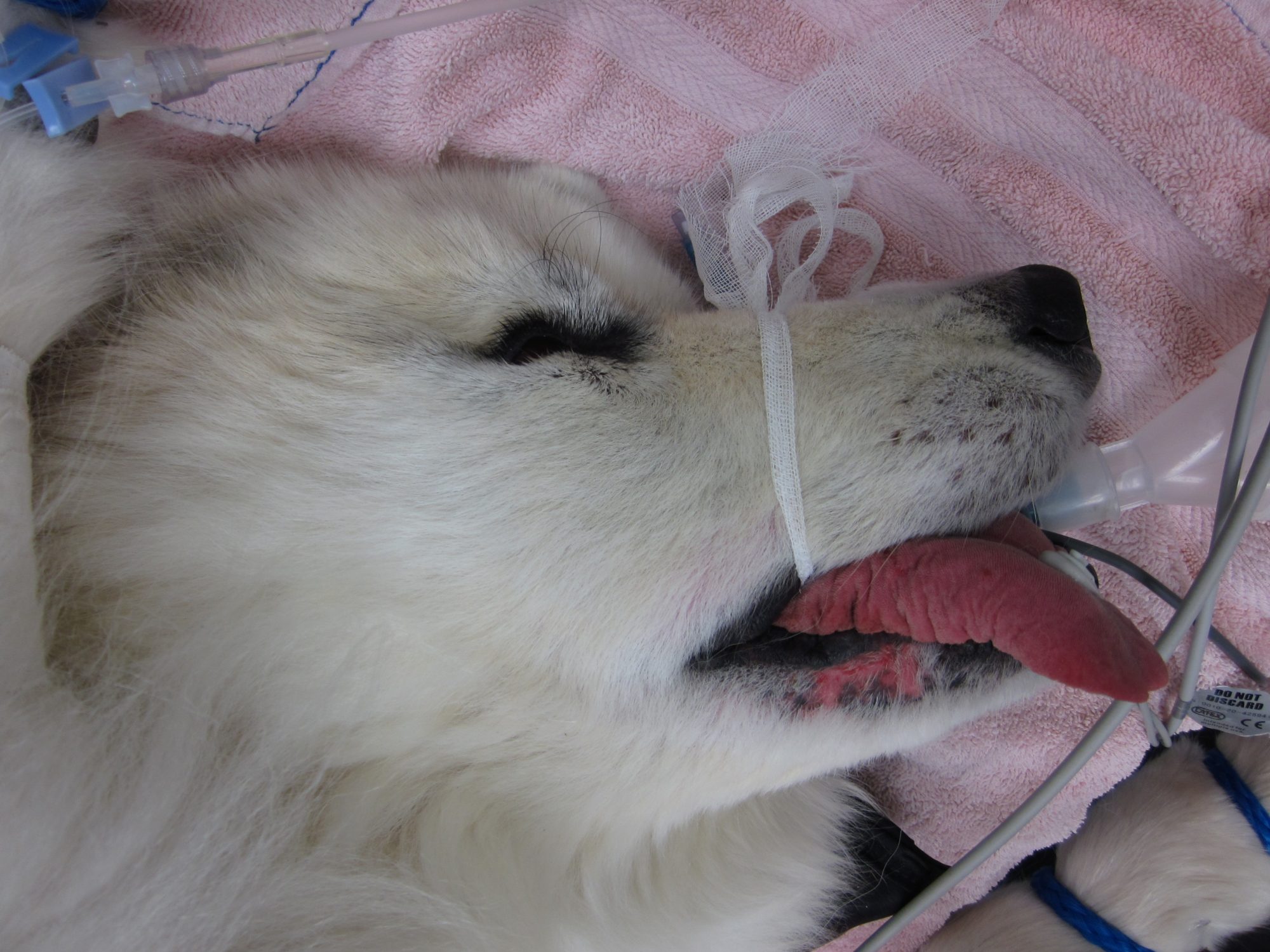Dr. Phil Zeltzman’s Blog
How safe is your pet’s anesthesia?

Surgeons love little sayings. One of them is “There are routine surgeries, but there is no routine anesthesia.”
It is a good reminder that while pets rarely die because of the surgery itself, they can die because of anesthesia.
This is why it is so important to do a thorough physical exam and blood work before surgery.
While not 100% foolproof, blood work helps us know whether internal organs are normal or not, especially the liver and the kidneys.
Those organs are especially important as they may filter some of the anesthesia drugs.
So we may change which drugs we use based on blood work alone.
This is much more important than only considering the pet’s age.
A (sick) 2 year old cat could have a higher anesthetic risk than a (healthy) 12 year old.
Another way to assess preop patients’ anesthesia risk is to determine where they fit in the American Society of Anesthesiologists’ (ASA) classification. This is a human scale, but perfectly adaptable to pets.
In fact, our wonderful nurses apply it to every single patient they anesthetize.
There are 5 classes.
Fitting a patient in one particular category is somewhat subjective, but here is the gist of the classification:
- Class 1 is “a normal patient with no organ disease”. This would be your happy, healthy, crazy 6 month puppy or kitten undergoing a spay or a neuter.
- Class 2 is “a patient with mild organ disease”. This is for example a puppy with a foreign body in the intestine or a cat with a fracture, or a patient with well-regulated diabetes or Cushing’s disease.
- Class 3 is “a patient with severe organ disease that limits activity but is not incapacitating”. This would be a patient with poorly controlled diabetes or hypertension.
- Class 4 is “a patient with incapacitating organ disease that is a constant threat to life”. This is a patient with severe heart disease or end-stage kidney failure.
- And let’s face it, class 5 is “a moribund patient not expected to live 24 hours with or without surgery.” In my opinion, the only reason to do surgery on such a patient would be to try to save his or her life. So it would be a risky life-saving procedure. Luckily, we are rarely faced with patients in that class…

Now let’s look at statistics from various scientific studies that answer this question: how often do pets die under anesthesia?
- The death rate for anesthetized dogs at the Colorado State vet school dropped from 1.2% in the 1950s to 0.43% during the late 1970s and has remained stable at 0.43%.
The initial 64% decrease in mortality most likely reflects technological advancements in surgery, anesthesia monitoring, and availability of safer anesthetic drugs. - The current feline mortality rate at the Colorado State vet school is also 0.43%
- Vermont family vets reported a 0.11% mortality rate in dogs and 0.06% in cats.
- In one of the largest studies ever, British vets reported a canine mortality rate of 0.21% and a feline mortality rate of 0.27%.
As you can see, even though there is no routine anesthesia, the overall death rate is very low in most cases: all studies show a death rate that is a fraction of 1%.
Accidents do happen, and our job is to minimize their occurrence.
Thankfully, in the very vast majority of cases, we can return a surgery patient to their family to heal after safe and happy anesthesia.
If you would like to learn how we can help your pet with safe surgery and anesthesia, please contact us through www.DrPhilZeltzman.com
Never miss a blog by subscribing here: www.DrPhilZeltzman.com/blog
Phil Zeltzman, DVM, DACVS, CVJ, Fear Free Certified

Dr. Phil Zeltzman is a traveling veterinary surgeon in Pennsylvania & New Jersey. An award-winning author, he loves to share his adventures in practice along with information about vet medicine and surgery that can really help your pets. Dr. Zeltzman specializes in orthopedic, neurologic, cancer, and soft tissue surgeries for dogs, cats, and small exotics. By working with local family vets, he offers the best surgical care, safest anesthesia, and utmost pain management to all his patients. Sign up to get an email when he updates his blog, and follow him on Facebook, too!

